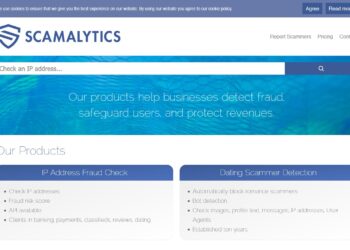The problem of cybersecurity remains extremely relevant for companies, as cyber threats are constantly evolving and becoming more complex and sophisticated. Cybercriminals are constantly developing new attack methods and tools, and companies must be prepared to defend against them. In this article, we’ll take a look at how SOC and MDR providers help companies counter new cyber threats.
The Main Ways to Counter Cyber Threats
The whole set of approaches, tools, and solutions for protecting businesses from cyber attacks can be attributed to one of three phases:
- Incident prevention.
- Incident monitoring.
- Incident response.
The first phase covers preventive security measures: they reduce the number of cyber incidents that a company may encounter.
The second and third phases are needed in case your defense systems are still bypassed. Effective monitoring of cyber incidents makes it possible to identify them at an early stage. If a break-in occurs, only prompt and professional response actions will reduce the damage and prevent repeat incidents.
Ways to Organize Monitoring of Cyber Threats
The organization of monitoring of cyber threats includes several key methods and approaches. They can be combined to create a more robust and complete system for detecting and responding to cyber threats. It is important to take into account the characteristics of the company, its infrastructure, and the level of threats in order to select the most appropriate monitoring tools and strategies. Let’s look at the main options:
- Internal SOC.
- External (cloud) SOC.
- MDR.
Internal SOC (Security Operations Center)
Internal SOC is a cyber threat monitoring center built inside the company. Among the advantages of implementing such a solution:
- Reaction speed. Since the IT staff and those responsible for monitoring are in the same company, internal communications are much faster. No information is lost, making it much faster to move to response once an incident is detected.
- Ease of adaptation. An in-house team can develop monitoring tools that are much better tailored to the business.
However, this approach also has disadvantages:
- High costs. Building an internal SOC will require a lot of expensive, highly skilled people. Therefore, the cost of such a solution is very high.
- Long build. Creating an enterprise SOC can take years.
- Lack of expertise and experience. Building and running an internal SOC effectively requires highly qualified cybersecurity professionals with sufficient experience and knowledge. Finding and attracting such professionals can be a difficult task, especially when there is a shortage of qualified personnel.
- No guarantees. The resulting quality of internal SOC monitoring varies greatly from company to company. And such a SOC can miss quite typical incidents.
External (cloud) SOC
Cloud SOC offers companies the ability to outsource their cybersecurity needs by allowing them access to advanced tools, expertise, and resources provided by a cloud security service provider. Instead of building and maintaining its own SOC, a company can rely on a cloud provider for monitoring, threat detection, incident analysis, and response. Among the benefits of using such solutions:
- Cost efficiency. Cloud models allow companies to avoid the cost of infrastructure, hardware, and SOC support. They can pay for services as they are used, which makes them more cost-effective, especially for small and medium-sized businesses.
- Rapid implementation. Building and deploying your own SOC can take significant time and effort. The cloud SOC offers a ready-made infrastructure and tools that can be quickly implemented and used.
- Expertise and cutting-edge technology. Cloud security providers specialize in cybersecurity and provide access to highly trained experts and cutting-edge technology. The company benefits from the use of advanced tools, analytics, and expert knowledge.
- Quality assurance. The vendor undertakes to comply with the SLA. Also, the external SOC assumes a constant flow of clients, which guarantees the quality of attack monitoring.
Despite the many benefits, cloud SOC also has some disadvantages to consider:
- Cloud service provider dependency. When using a cloud SOC, a company relies on a cloud security service provider. This can create a dependency on a third party and affect the level of control over the security of data and transactions.
- Data privacy. Transferring and storing data in the cloud can raise privacy and data security concerns. Companies must be confident in the reliability and security of the cloud provider, as well as in the encryption and data protection mechanisms.
- Limited control. When using a cloud SOC, a company loses some degree of control over security processes and monitoring. It relies on a service provider to manage and control the system. This may limit customization and personalization options for your company’s specific needs.
MDR (Management Detection and Response)
MDR provides for the collection of events from agents at endpoints. The solution allows you to conduct a deeper analysis of unusual behavior in systems and detect hidden threats. The agent also allows you to perform some initial response actions on hosts, such as collecting response information and removing malicious files. This solution is fundamentally different from the other two. Among the benefits of using MDR:
- Proactive approach. MDR not only detects security incidents but proactively responds to them. This allows you to prevent the spread of threats, quickly respond to incidents and take timely measures to minimize damage.
- Expert analyst support. MDR providers have high cybersecurity expertise and skilled analysts who analyze data and identify hidden threats. This allows the company to get a more accurate and in-depth assessment of its security and provide protection against advanced cyber attacks.
- Resource efficiency. MDR providers offer outsourced cybersecurity services, allowing companies to save resources on building and maintaining their own SOC. The company gains access to advanced tools, technologies, and expertise without the need to invest in its own resources.
Among the disadvantages:
- Risk of unauthorized access. You need to trust the vendor to give it access to all endpoints.
- The complexity of covering all endpoints. It is not enough to collect data from centralized systems such as domain controllers. You need to install an agent on all endpoints, some of which may be difficult to access
Final Thoughts
Small and medium businesses are encouraged to focus on monitoring cyber threats. And the best choice here would be MDR. MDR does not require a centralized infrastructure, and for a small number of endpoints, this solution will be quite cheap. Under Defense is an experienced and trusted provider of MDR and SOC solutions for businesses across a wide range of industries. The company provides comprehensive and continuous support in monitoring cyber threats, while you can focus on business development.






